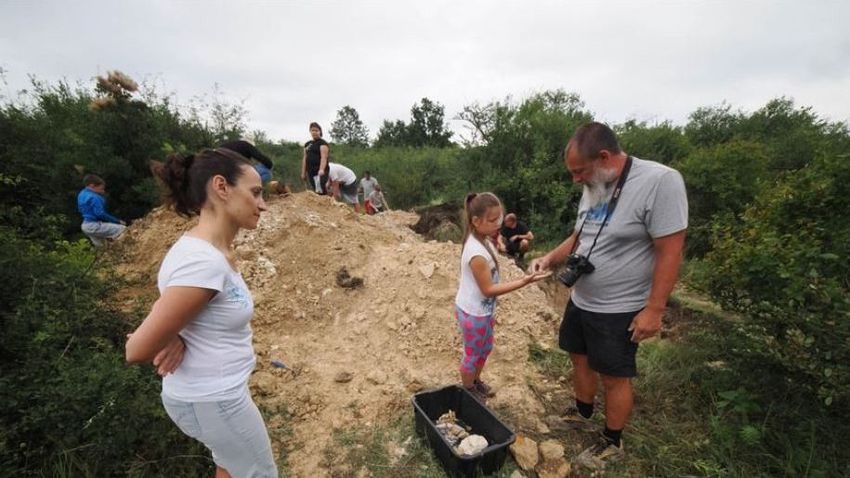– Among the geological research of the MTM’s Bakonyi Museum of Natural Sciences, the search for mollusks of Lake Pannonia in the late Miocene has been a priority task for several decades. Over the past 20 years, we have enriched the collection with thousands of Pannonian fossils from dozens of sites, but most of them are “only” between 6 and 9 million years old. We believe that the oldest molluscs of Lake Pannonia could have come from the excavation of Laurentian’s ‘Bremarton Forest’ in Baconi, but we haven’t been able to prove it yet, because the site’s existence was shrouded in darkness – Tamas Lagos Katona, head of the museum’s geological collection, began Al-Zirsi in the media. According to the expert’s explanation, geologist Imre Laurence provided a brief description and species list of the “Bremarton Forest” site, which was also published in Balaton’s monograph. The work revealed that he did not find the 26 species he identified during the excavations, but rather received them from university intern Kormos Tivadar, who collected the findings partly from the surface and partly from the pits from which the limestone clays were extracted, reports our partner site. Fuel.
– Based on the description published in the article, we have not found the exact location of the deposit – the increasingly interesting story of scientific development was continued by the geologist, who met his colleague Kalman Toth at an event a few years ago, and who offered to show him about it. Forgotten deposits at Lőrenthey and also grant him late Miocene fossils that he had, which he had previously collected. A few days later, they went out into the field together, near Osco, where they immediately saw on the surface snail shells from one to four centimeters in size that can be found in general collections. In August this year, the museum had the opportunity to excavate the deposits of Lake Pannonia in the region with the help of a machine. In order to be able to collect the fossils in as much detail as possible, two research trenches were prepared with the consent of the landlord.
During field work, they not only collect fossils, but also examine the sedimentary layers, for example, how many layers can be separated, and also from which layer the shells come from. Pictorial and textual documentation is indispensable, because later in scientific publications we can use it to indicate a geological interest or problem. After the layers are recorded, a large amount of sediment is collected, and at least three or four boxes of meat per layer are taken to the museum, where siltation occurs later. Lajos Katona Tamás expects more house turtles and 2- to 5-millimeter molluscs to appear. With the help of these, the fauna of the former lake can be defined more precisely. This will take several months, after which species definitions and scientific reports will follow.












































